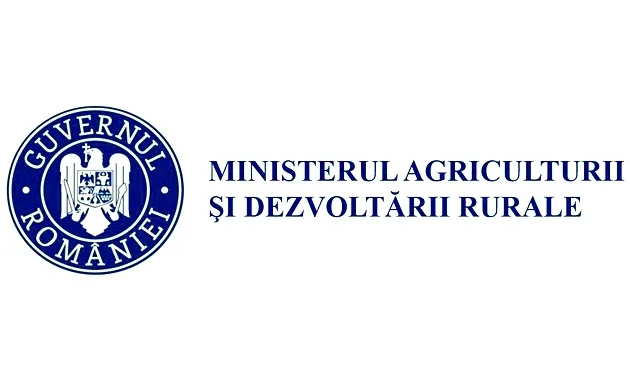
Concerns about costs remain at the forefront, but there will be plenty of other trends shaping shopping habits this year, notes JustFood.
Health Comes First
Health is likely to be at the top of consumers' minds in 2024, accompanied by a closer analysis of ingredients, while there is still some life in plant-based foods. Cost and value, however, will continue to dominate shopping behavior.
Inflation rates may ease in many markets, but prices remain higher year on year. The prospect of deflation, as opposed to less severe price increases, is a distant phenomenon at this point.
Meanwhile, historically high interest rates represent an additional burden on household budgets, with all bets on when they might start to decline.
Supermarket own-labels and discount retail channels are expected to continue to benefit, although some industry observers say there are signs of optimism as wage growth picks up in certain quarters.
"With regards to trading down, Lidl, Aldi, and own label, I see those trends continuing until there's a feel-good factor back," says Shaun Browne, Co-Head of Corporate Finance in the UK at investment group Houlihan Lokey, tells Just Food.
"In times of uncertainty, consumers tend to stick to the tried and tested end of the spectrum of comfort foods, rather than trying something exotic and new.
"I suspect for the next six months, it will continue to be more about trading down, more about cheaper products, more about own label. And then, perhaps, as the year progresses, things will start to look a bit more positive for the higher-end of the spectrum."
Opting for Vegetables
Siobhan Gehin, Senior Partner at global consultancy firm Roland Berger, agrees with Browne's hypothesis about "value and price," but, apart from consumer cost pressures, says health will be a key focus in 2024.
COVID-19 has heightened the health spectrum, and the trend has largely continued, likely disrupted by buying decisions related to accessibility and demand for key staple foods in the context of the cost of living.
Plant-based is part of the health philosophy, but 2023 wasn't a good year for the category, marked by further signs of slowing growth and the demise of companies like The Meatless Farm Co. and Plant & Bean. The Meatless Farm brand was subsequently bought by a competitor; others weren't as fortunate.
There is still a market for plant-based foods, Gehin maintains, albeit at much more conservative growth rates than in the early part of the decade.
The Fight for Any Niche
"There's a sense of reverting to basics, and smaller brands have really fought for any niche, and plant-based has taken a hit or come out of the big bubble," she says.
"That being said, I still think there's a real thing about health, but perhaps not quite the same perspective as during COVID. There's a whole rise of consumers who are very well-informed about nutrition and longevity. Everyone wants to know what's in it.
"Companies will need to be much more aware that consumers are more informed, curious, and care more."
Gehin suggests that greater awareness and control over ingredient lists have been a disadvantage for some plant-based foods, opening up the argument about transparency by producers across all categories.
"I still think the reasons why consumers have shunned it are price, taste, and a long list of ingredients. I think for the players who can get it right, there's a very large market," she says.
"People are now scrutinizing ingredients more, and I think that's one of the reasons why plant-based food has taken a cropper, because for food that's supposed to be healthy, a lot had as long a list of ingredients as your arm."
Like Gehin, Browne from Houlihan Lokey shares the view that plant-based foods still have legs but with the same reduced growth trajectory.
Many Remain Meat and Dairy Adherents
However, Cyrille Filott, a global strategist for consumer foods, packaging, and logistics at Dutch investment bank Rabobank, while echoing these positive nuances, suggests that "a whole large group of consumers is lost forever because they've tried it, didn't like it, and are unlikely to return to the category soon."
At some point, we will begin to see growth in the plant-based category again.
Filott predicts that growth rates in this category will be "much more moderate than they were in 2020 or 2021," but demand is largely based on the younger age group. However, he acknowledges that the quality and taste of plant-based products have improved in recent years.
"At some point, we will begin to see growth again because there is a group of consumers interested in these types of products," Filott explains. "Some of the younger generations might be more interested in such products for various reasons – nutrition, sustainability, and animal welfare – but it's very gradual. It's not the big change everyone was expecting two or three years ago."
Browne anticipates another "tough" year for the category, though he says growth is likely to pick up as consumer demand becomes more balanced with supply.
"As a result of the rapid growth from a very low base, it encouraged a massive number of new entrants to the market. Everyone piled into it because it looked like a pot of gold," Browne explains.
"In fact, you've seen a slight tilt back and the long-term structural growth of meatless products has reversed slightly in recent months, and I think that's a result of too many players entering the market. The imbalance between supply and demand will start to return to equilibrium, and then I think you'll see the growth return."
A "Holistic" Health Picture
Fortified foods could see growth in 2024, based on the health and wellness consumption trend as well as the entire aspect of transparency, sustainability, and "provenance," Gehin adds with a cautionary note.
"There's still a big tranche of consumers who can only afford the most basic products, but for those who have choices to make, they will increasingly analyze labels and hold consumer goods companies and retailers to a higher standard of provenance."
Nick Cooney, a Leading Partner at Lever VC, the U.S.-based best-for-you investor, says people want to be "healthier" these days, seeking out foods that enhance potential longevity and are also perceived to be good for mental health.
People are Seeking Wellness
"People are seeking wellness as part of a holistic solution to have more well-being. It could be fortified foods or whole foods that have natural components, like pomegranate," Cooney suggests. "Formulation is part of it. I think another is transparency and labeling."
Browne from Houlihan Lokey identified vitamins, minerals, and supplements as "very hot right now" as consumers look for ways to "maintain their health."
Processed foods will face "some headwinds," he added, a view that isn't entirely shared by Filott from Rabobank.
The debate about ultra-processed foods and their impact on health continues to swirl, but regarding the prospect of more consumers moving away from UPFs to less processed ones, Filott says, "We haven't seen it yet, but it's something to look out for. . I'm not fully convinced, but it's something that's definitely on consumers' minds."
Brighter Outlook for Premium?
Many consumers are likely to remain strained in 2024 to varying degrees, depending on the intensity of inflation across different European markets, Filott considers, although consumers benefiting from wage increases may be encouraged to spend more on premium foods, treats, and indulgences.
"The accessible end of the shelf spectrum will continue to do well, as I don't think all consumers will bounce back," he explains.
"We might see a slight recovery in premium products. What we saw after the great financial crisis is something we call hybrid consumerism – a lot of spending on value products, but occasional splurges on the premium end, leaving the middle out. The middle might continue to struggle, while the top and bottom might continue to do well – the hourglass shape."
As for the demographic channel, Gehin expects food retail, grocery stores, and fast-food restaurants located at gas stations to play an increasingly larger role in consumer shopping behavior as electric vehicles and time spent at those locations charging their cars grow.
"The other important thing about the channel is the continuing convenience, the retail out of home, and then this point of fusion between eating out versus eating in, eating on the go, or eating for tonight or snacks," she says.
"Retail out of home is definitely a channel that's growing everywhere with the advent of electric vehicles, and consumers are spending more."




